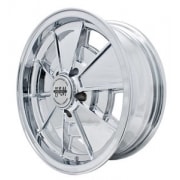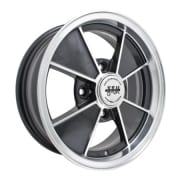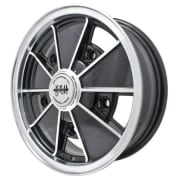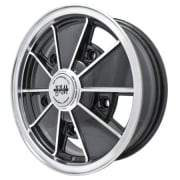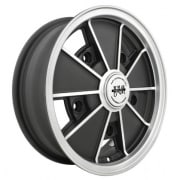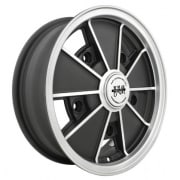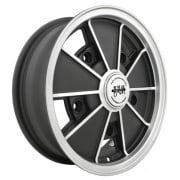The name BRM and EMPI are synonymous with the early days of VW tuning in the USA and its links with the British Speedwell organisation have caused Volkswagen enthusiasts the world over to suddenly take an interest in this long-lost company. However, few people are aware of how the Speedwell story began and how the company came to be involved with the VW performance industry back in the 1960s.
The tale begins in the most unlikely of places: an espresso bar in north London. Espresso bars were the centre of the social life of many young people in the late fifties and early sixties, being in many ways the equivalent of a wine bar today except they sold warm, frothy coffee from an espresso machine, rather than alcohol. A young motorsport enthusiast by the name of John Sprinzel used to frequent the espresso bar and there met George Hulbert, a fellow enthusiast who offered to do some cylinder head work on Sprinzel's Austin A35. The result was a car so much improved that it won its first outing at Goodwood race circuit on Whit Monday, in 1957. The ensuing media coverage led to a deluge of letters from other enthusiasts, all wanting to know about these cylinder head conversions.
Following this, Hulbert and Sprinzel discussed the idea of forming a company to cater for this potential market. As it happens, another regular at the coffee bar was a person by the name of Len Adams who was also a motorsport fan. He was soon overwhelmed by the prospect of being involved with a tuning company and joined in the discussions. A fourth person, Reg Venner, was employed as the mechanic, while a budding racing driver-cum-mechanic, by the name of Graham Hill, became workshop foreman. Thus, on 26th June 1957, Speedwell Performance Conversions was born, the name being derived from that of the local telephone exchange at Golders Green.
This enthusiastic team was soon joined by a secretary, Ann Wisdom, who herself was to gain notoriety in later years as a successful navigator to Pat Moss, the sister of Stirling, in international rallying. The company's office was initially located in John Sprinzel's flat at 7 Accommodation Road, Golders Green, but later moved to 763d Llanvanor Road when it became obvious more space was needed. Eventually, as business began to boom, Speedwell acquired the premises next door, and then next door to that, ultimately owning a string of properties, including a shop on the corner of Finchley Road. By now, the team had become pretty organised, with Reg Venner and Graham Hill carrying out the conversion work, Len Adams looking after the sales, George Hulbert doing the development work and John Sprinzel handling the day to day running.
Without doubt, the best-known joint venture between EMPI and Speedwell was the BRM wheel. Cast by the Rubery Owen organisation from almost pure magnesium, they were claimed to be some 40% lighter than the original steel wheel, stronger and wider, with a rim width of 5ins. Announced in January 1966, the wheels were first seen by the public at the end of February and would soon become a big seller in the USA where the benefit of light weight was not lost on the drag race fraternity. Although several examples of the wheel were undoubtedly sold in the UK and Europe (nobody knows for sure how many were actually made), they have proved to be virtually unobtainable in recent times, with most known examples having been imported from the USA at great cost. Originally they sold for just £14/10s (£14.50p) each! Or you could splash out and buy five at the bargain price of £69/10s (£69.50p), thus saving £3.00. Amazingly enough, chromed Porsche 356-style wheels were only £3.00 cheaper than the BRMs.
The Speedwell range was fairly as far as dedicated parts for the VW was concerned, consisting largely of the two carburettor kits, camber compensator, valve guides and road wheels. Most other components, such as the gauges, steering wheel and door mirrors were designed to be used on a wide range of vehicles - the Mini was by far the most important car as far as Speedwell was concerned, with most of the development work being carried out in that direction (sad, but true!).
By the end of the 1960s, Speedwell as we know it had all but disappeared, along with so many other well-established British tuning companies. Changing attitudes, cheap imports, better cars available in the showroom - all conspired to tap the nails into the coffin of the industry. Today, however, Speedwell lives on in spirit and the name is beginning to capture the imagination of a whole new audience which is gradually becoming aware that, once upon a time, this country had very close ties to the late, great EMPI.
Here is a link to a small website dedicated to the Speedwell history:






























































